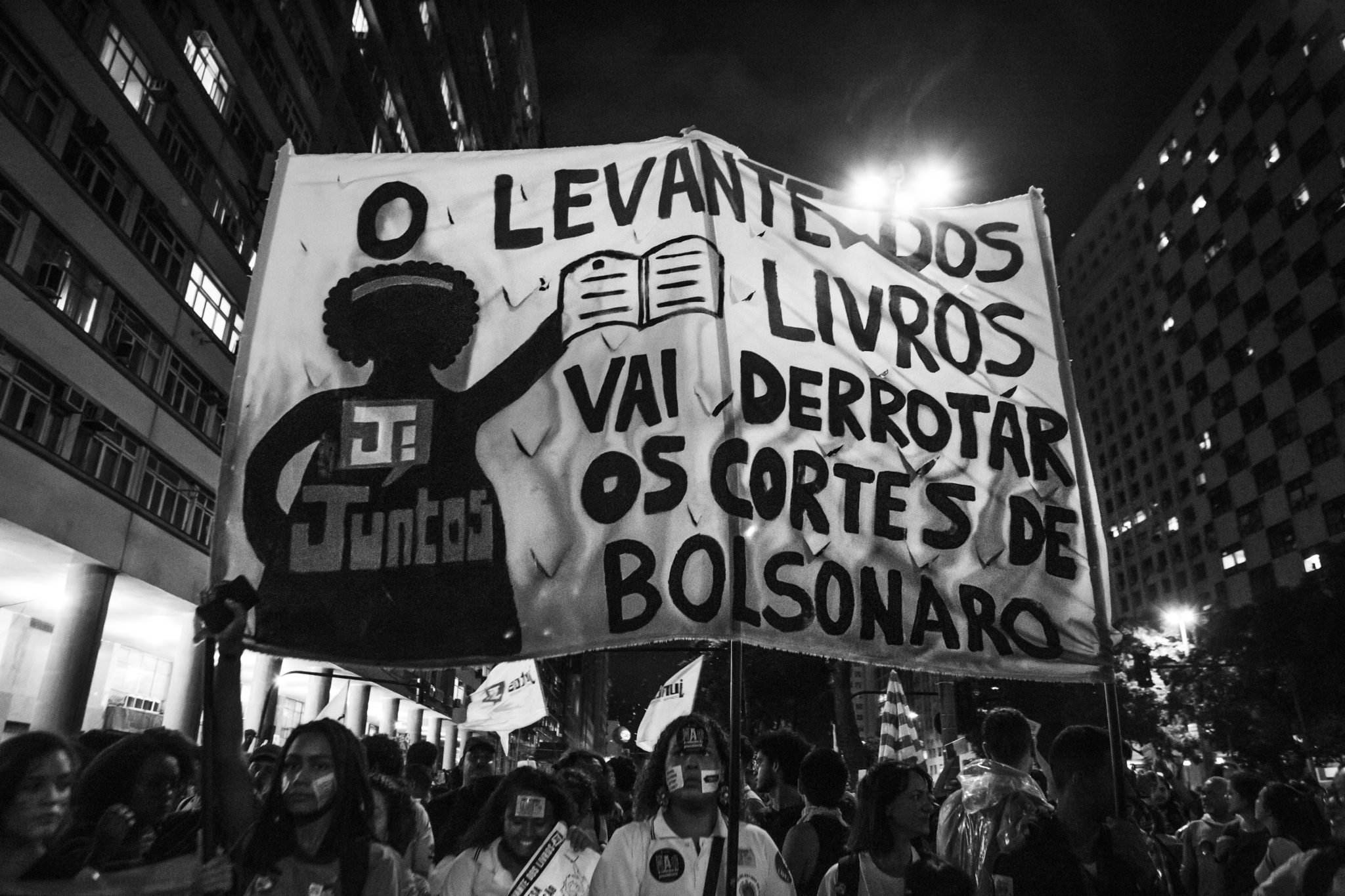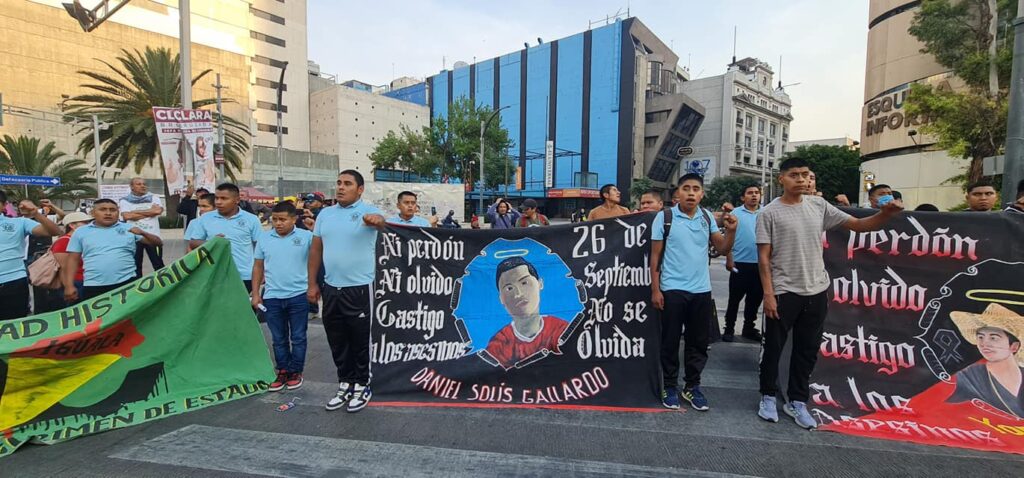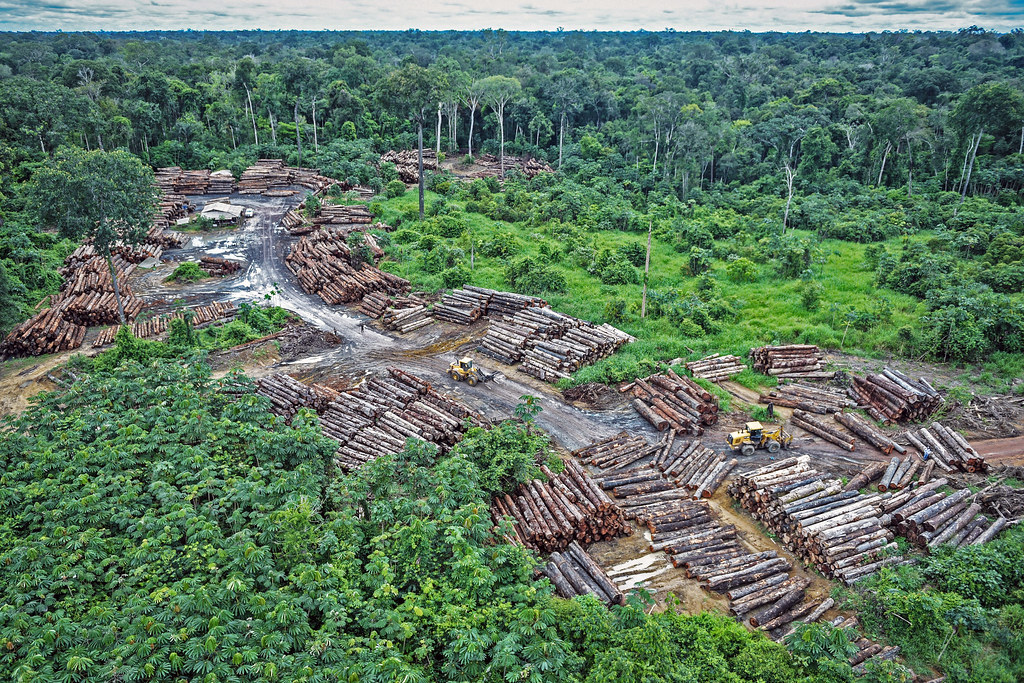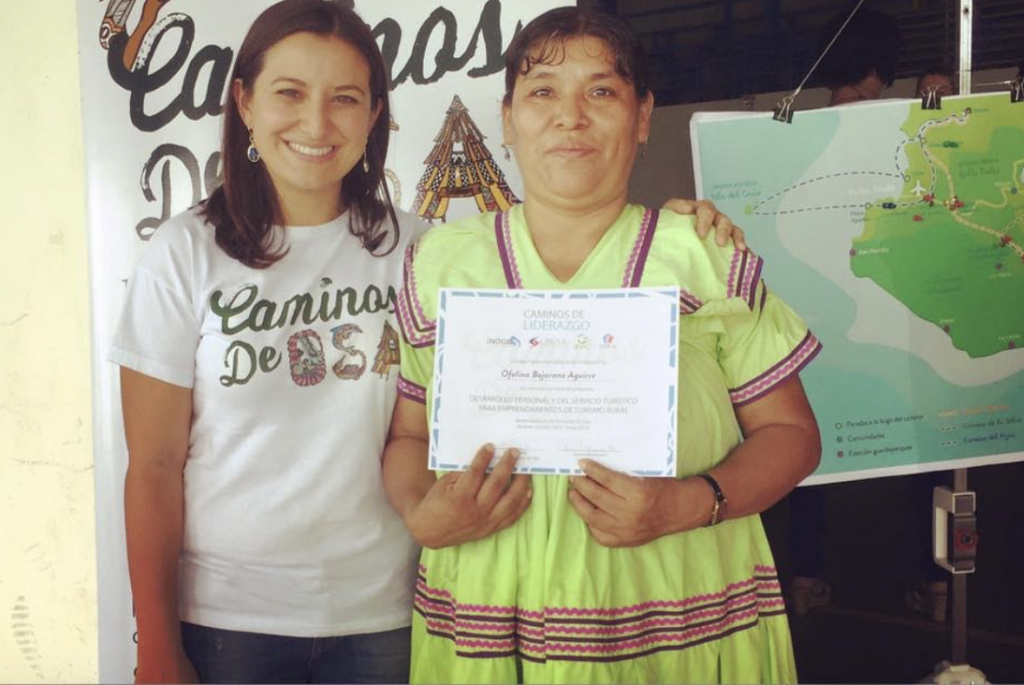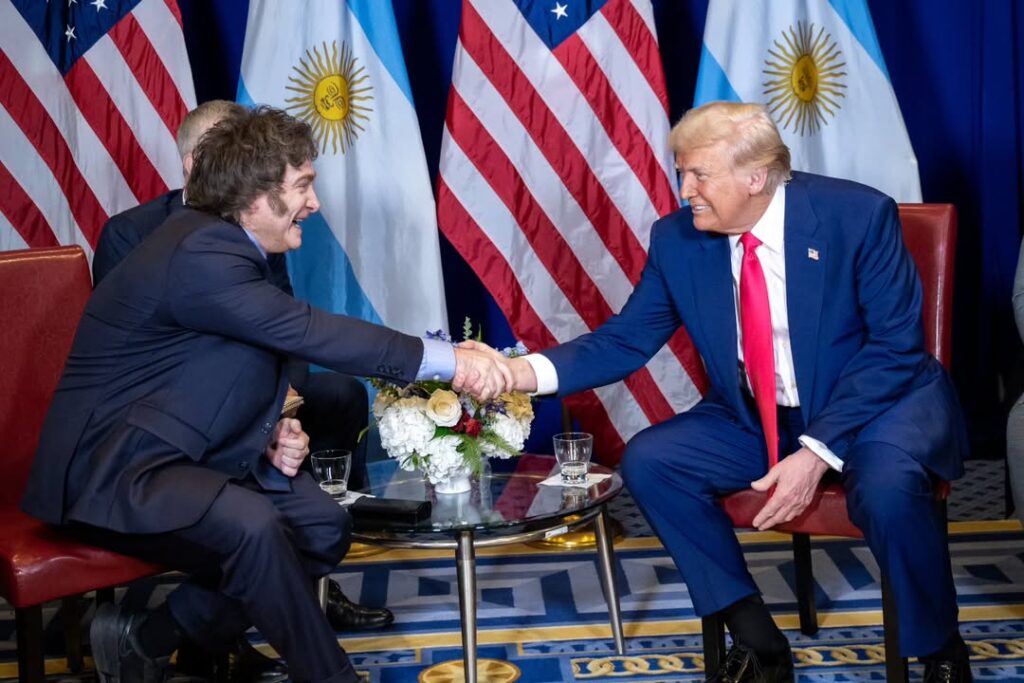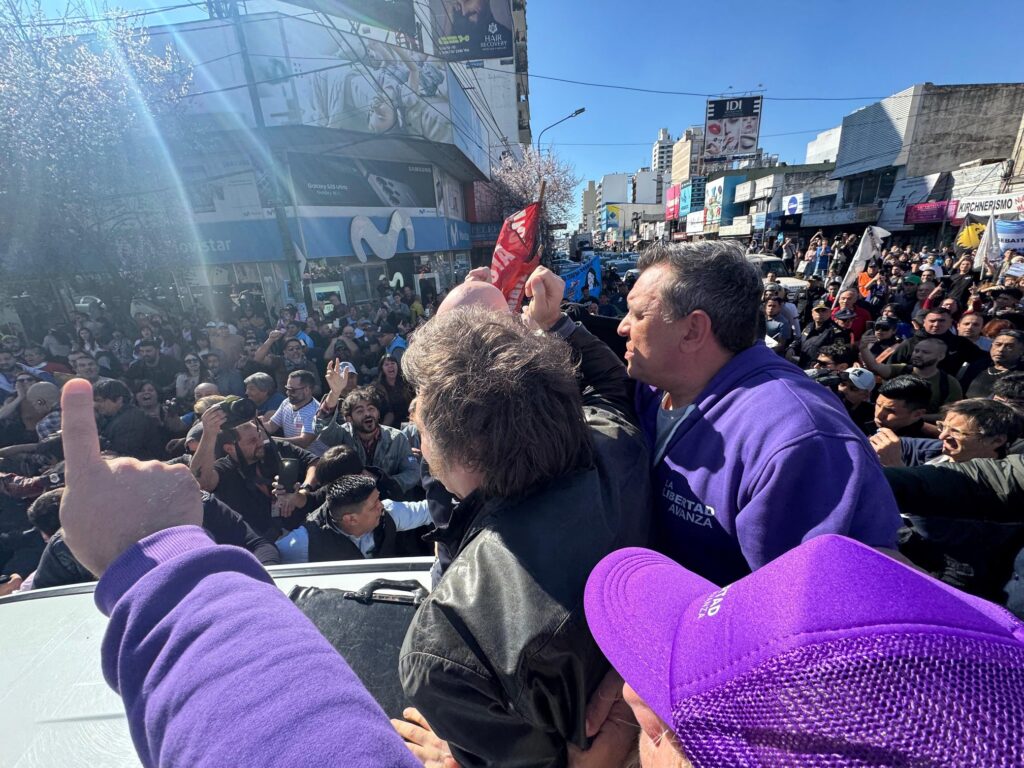This year has offered no shortage of striking visuals from protests and social movements from across the region. In addition to shooting our own photos, the Latin America Reports team has collaborated with local photographers on the ground in places like Brazil and Puerto Rico to bring more context to the words on a screen. This collection of photos includes our highlights from protests across Latin America this year.
May
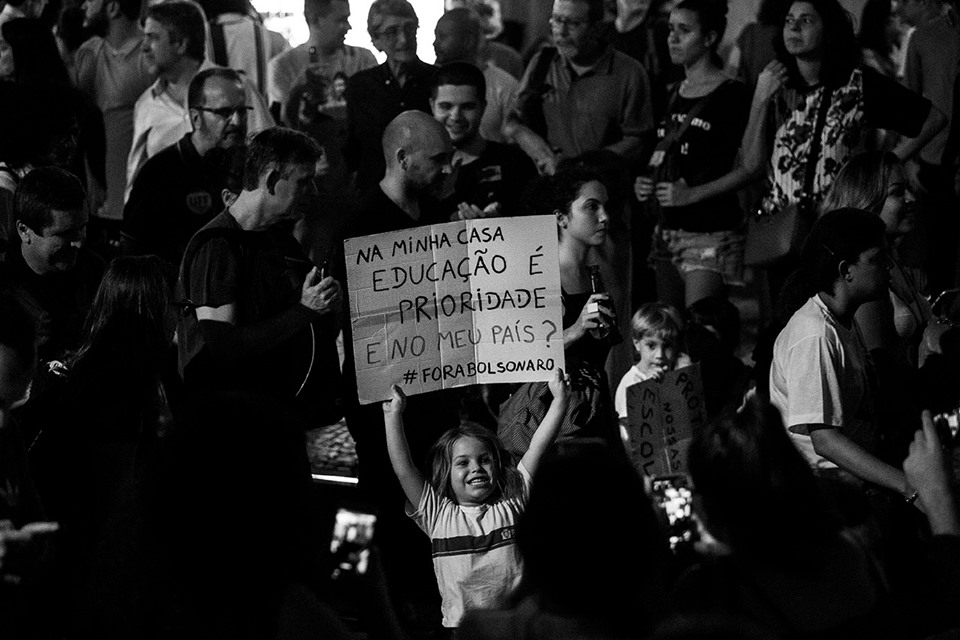
In May, Brazil’s university students and professors protested against President Jair Bolsonaro’s austerity measures for public education institutions. Despite government warnings against protesting during working hours, demonstrators filled the streets of Rio de Janeiro to continue their protest against cuts to public education institutions. “In my house, education is priority. And in my country? #BolsonaroOut,” read a young child’s banner. Photo by Ana Carolina Fernandes.
Read – Brazil’s university students to Bolsonaro: Don’t cut the education budget
Read – In photos: Brazil’s second round of education protests
June
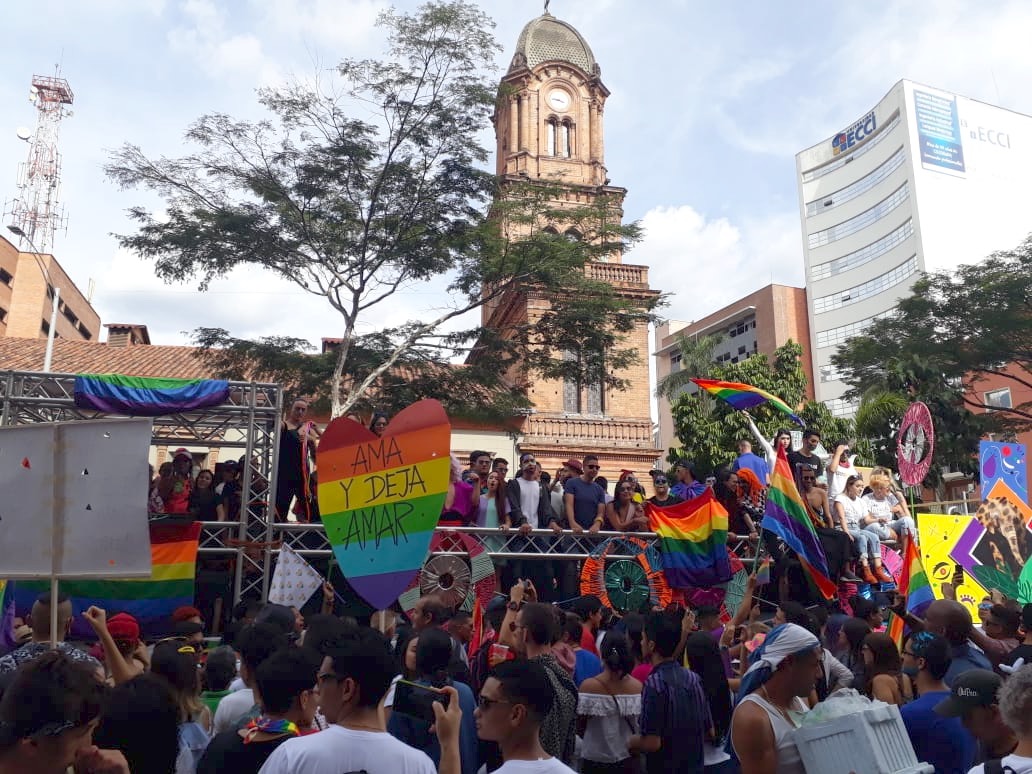
In June, 75,000 people took to the streets in Medellín to celebrate the pride of the city’s LGBTQ community. This year, the parade was particularly important as the day before it took place, the LGBT flag was taken down from its hoist at the top of the city’s Cerro Nutibara and destroyed. The march, in contrast, was peaceful. Photo by Frances Jenner.
Read – In photos: Medellín’s 22nd Pride March
June

In June, hundreds of thousands of Puerto Ricans took to the streets as part of a strike fueled by national grievances related to the island’s government, which they believed to be corrupt. Former governor Ricardo Rosselló eventually resigned as a result of the protests. Photo by Marisol Pesquera.
Read – Why are people protesting in Puerto Rico?
July

In Colombia, 777 social leaders were reported to have been killed between the start of 2019 and September, according to NGO Indepaz. In July, people took to the streets to demand their protection. “Building a different country is costing us our lives. #BeingASocialLeaderIsNotACrime,” read a banner paying homage to María Pilar Hurtado, a social leader murdered in June. Photo by Felipe Bedoya.
Read – In photos: Medellín marches for the lives of social leaders
September
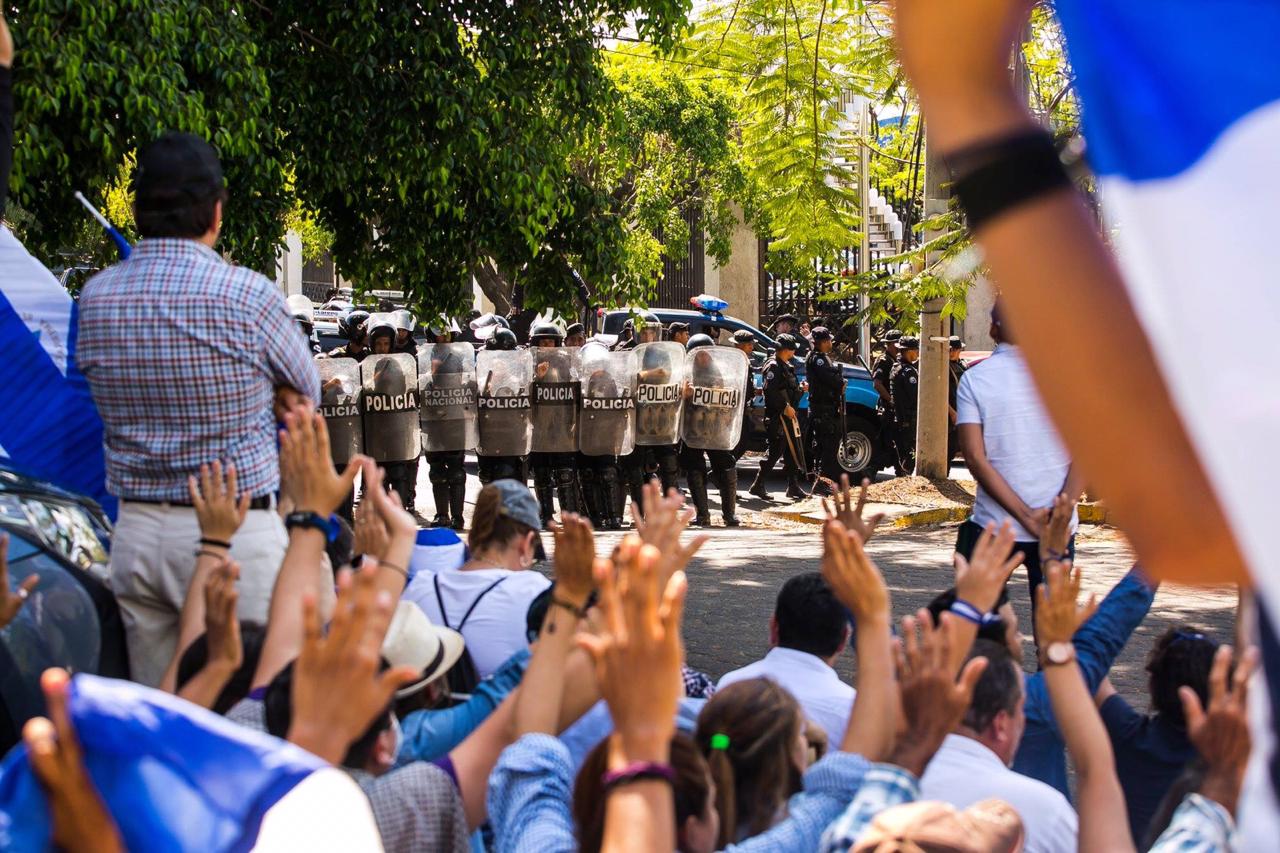
Police in Nicaragua prepared to handle a demonstration in September against President Daniel Ortega’s administration and the human rights abuses it has overseen. Photo courtesy of Jorge Mejía: Creative Commons.
Read – Repression returns to Nicaragua
October
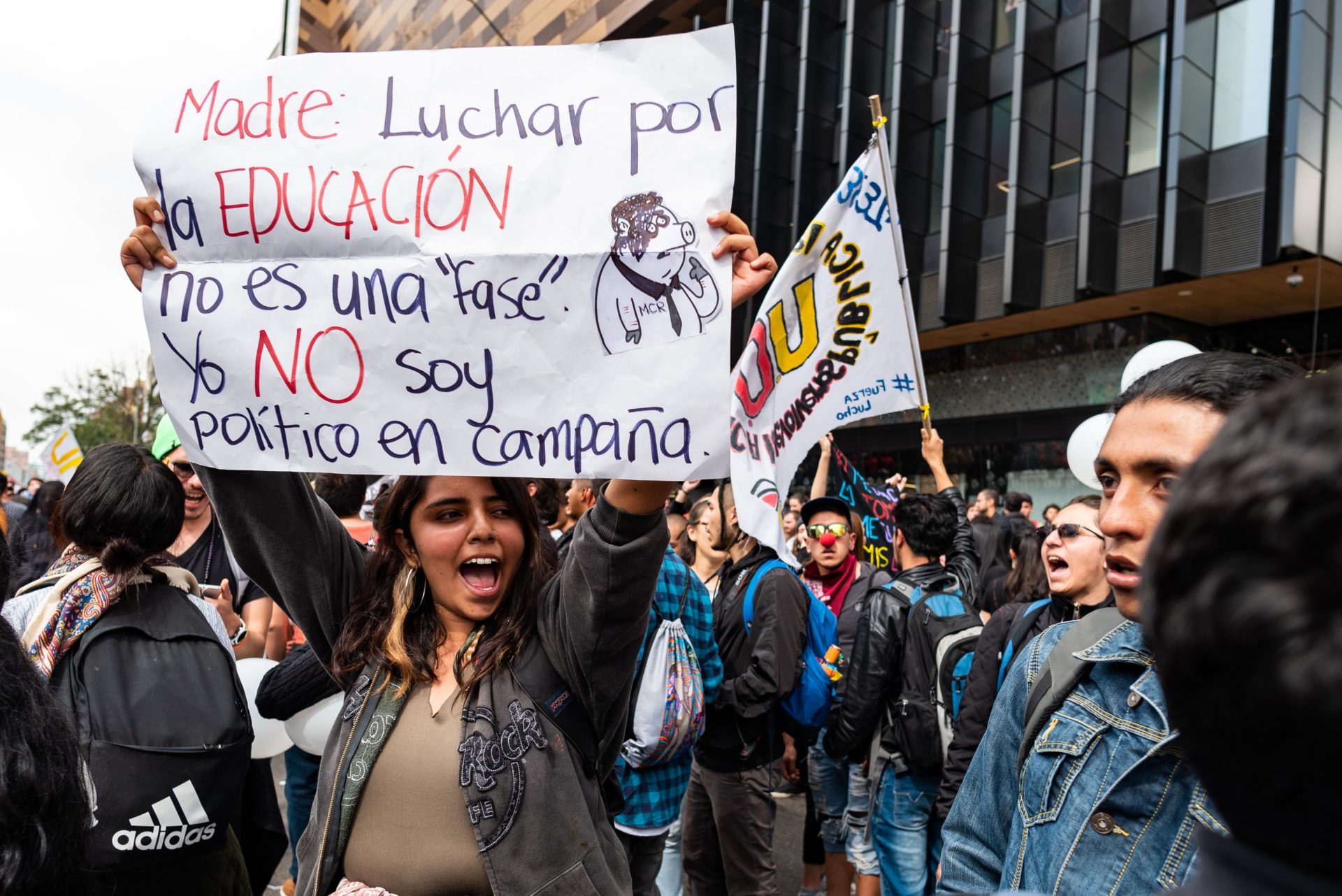
In October, students in Colombia’s capital Bogotá protested against police violence and corruption within the city’s public universities. One girl held a banner that read, “Mum, fighting for EDUCATION is not a “phase.” I’m NOT a politician in campaign.” Photo by Ignas Karvelis.
Read – In photos: Bogotá students protest against police violence
November

Colombia’s ongoing national strike has prompted hundreds of thousands to take to the streets in protest against President Iván Duque’s government. A group of demonstrators held up signs referencing Duque’s response to a recent incident in which the Colombian Ministry of Defense failed to report the deaths of minors in a recent military operation against FARC dissidents, which the president claimed not to know about. Their banners also detail grievances such as unemployment, killings of social leaders, deforestation and the lack of implementation of the 2016 peace agreement. Photo by Felipe Bedoya.


